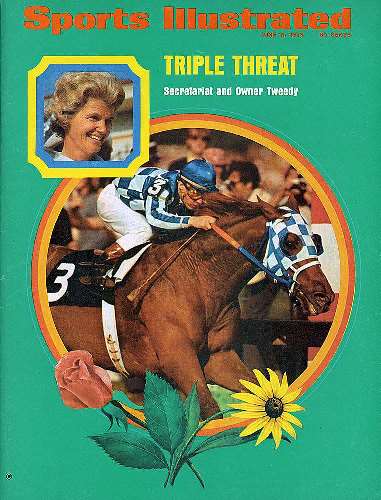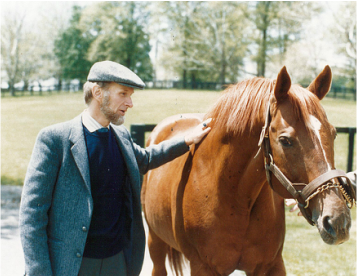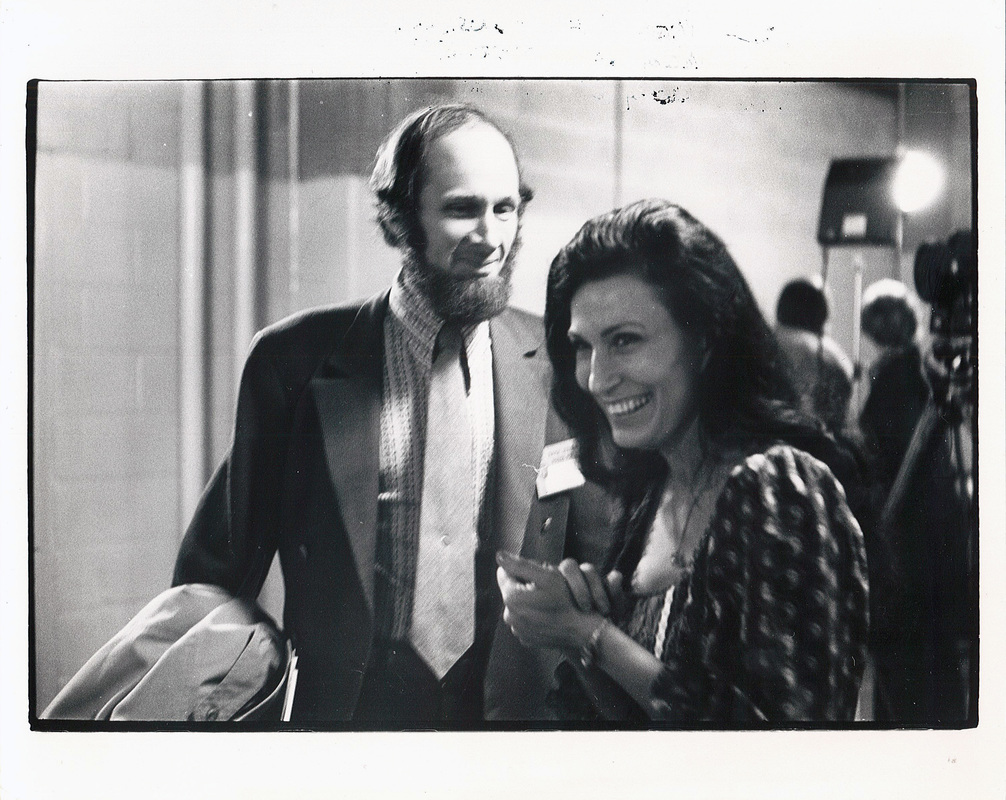|
With a dollop of guilt, I read about the plague of layoffs at Sports Illustrated. After all, I dropped my subscription shortly after retiring as a sports columnist at the Times, nearly eight years ago. I no longer needed to keep up with most of the sports; I needed time to read other things. So it’s hard to level blame at the decline of a giant that meant so much to generations of fans and readers. It’s a sign of the times. I have seen very good newspapers decline or disappear. No sense going over the list. Apparently, the economy does not support the printed word you can hold in your hand and read without having advertisements and other diversions slither into your vision. Thank goodness the NYT and Washington Post and Wall Street Journal and others keep up the staffs and budgets and the standards to keep track of the scoundrels in our midst. But Sports Illustrated – once a plush weekly with talent and swagger plus the budget to back them up – has now been sold to something called a digital platform company.  As a young newspaper reporter, I appreciated the writing style -- and space -- that went far beyond the daily accounts in the papers. Stars like Dan Jenkins and Robert Creamer in the early years, Neil Leifer with his camera, always in position, and then young stars like Frank Deford and Gary Smith. It took time to read their articles. These were no tweets, no muscle-twitch fire-the-bum impulses from the Blogosophere. If I had to pick one article that stood for all the expertise and talent (and space, and money) of Sports Illustrated, I would choose the ode to Secretariat written by my friend Bill (William in his byline) Nack, upon the putting down of the great champion in October of 1989. (As it happened, I had petted Secretariat on his swayed back in May, had felt the earth tremble when he moved. ) Bill loved the big red horse, loved the Bluegrass milieu, and he cried when he got the phone call he had been dreading. Later, Bill went through the self-torture of writing he felt every time, only worse this time. But SI had space, and patience, and when Nack was done, there was the article, the masterpiece. But Nack was not alone. Like a Secretariat of magazines, Sports Illustrated raced through more decades of stories and stars: Tim Layden with his versatility, Steve Rushin with his columns, Michael Farber on hockey, Tom Verducci with baseball, Grant Wahl treating soccer seriously, Doctor Z -- Paul Zimmernan - with pro football. So many more I could, should, mention. (Plus, I should note, before SI, there was the great Sport Magazine, RIP, edited for over a decade by my friend Al Silverman, who passed recently. Sport was doing long-form articles long before SI did.) Then the model began to show its age. Advertisements declined. Attention span declined. People were slinging opinions over the Web. Instant gratification. I’m old. I don’t know 99 percent of what goes on out there in the Web. I get the New Yorker in print form every week, and peruse it ceremoniously, and The New York Times arrives in my driveway every morning, plus its magnificent website, and if I want to find out what my Mets did in the past 24 hours I consult Newsday (paid) or the New York Post (on line.) Plus hard-covered books, all over our house, plus magazine articles friends send me. More than enough to read. Hence, my tremor of guilt about the imperilment of Sports Illustrated. Then I read about good people, whom I knew when they were youngsters just breaking in, like Chris Stone, the editor-in-chief, who just got fired by the “digital platform,” whatever that is. Bill Nack cried over Secretariat. I just shake my head and write this piece…and put it out there…on line. Thanks, Sports Illustrated, for all the great articles over the years. * * * Bill Nack's masterpiece on the death of Secretariat, standing in for all the glorious long pieces in SI: https://www.si.com/longform/belmont/index.html NYT article on the talent massacre at SI: https://www.nytimes.com/2019/10/03/business/media/sports-illustrated-layoffs.html?searchResultPosition=1 A list of great writers at SI: https://en.wikipedia.org/wiki/List_of_Sports_Illustrated_writers The time I petted Secretariat, courtesy of a friend: https://www.georgevecsey.com/home/category/horse%20racing I’ll be discussing my long relationship with Kentucky this Saturday in my town, Port Washington, Long Island – at the Dolphin Bookshop right after 3 PM.
Mostly I’ll be talking about how a few years of living in Kentucky gave me enough material to fill my head and my books and my articles forever. I doubt I’ll get to all the stories, so let me tell how this photo with Secretariat came to be taken: It started on May 6, 1989, when Sunday Silence won the Derby. At the media party late that night, a friend offered a tour of Stone Farm, where Sunday Silence’s sire Halo lived. Oh, and on the way back up Winchester Road we could stop at Claiborne Farm to see Secretariat. I am not a racing guy, never bet, have no clue who is running in the Derby on Saturday, but when I covered the Derby, I could learn the new cast of characters. Mostly, I loved the mystique of the Derby that makes Kentucky so different. I get misty when everybody stands and sings “My Old Kentucky Home.” I love the John Prine version: https://www.youtube.com/watch?v=UHcjwLoIFXE Plus, nobody passes up a chance to see Secretariat. First, we stopped at Stone Farm and visited Halo’s stall. I moved close to the wooden slats, only to feel the strong, insistent nudge of the groom, Handsome Sam Ransom, moving me back. “He bite your head off,” Handsome Sam said. The other horse people nodded. Mean SOB. I didn’t give Handsome Sam enough credit in my column that week: http://www.nytimes.com/1989/05/14/sports/sports-of-the-times-a-visit-to-the-father-of-champions.html We paid homage to Halo and his genes from a safe distance, then headed to Claiborne Farm. My guide, Fara Bushnell, who had some thoroughbred business with a couple of English buyers, handed me a couple of sugar cubes. Not supposed to feed the horses, she said, but…. We walked over to the fence, alongside a low hill of lush Kentucky bluegrass. I put a sugar cube on my palm. The hillside began to shake, better than an earthquake -- a 19-year-old, reddish of color, with a white patch on his nose. Big Red lumbered over. He knew the drill. A wet nose nuzzled my palm, taking his present.Then he stood still, allowing me to touch his swaybacked side. My friend snapped the photo. Big Red could go now. I never saw him run in person, but I have written about him dozens of times since, whenever some interloper tries to win the Triple Crown. I cannot tell you who the greatest baseball player or basketball player was, but I will tell you that nobody came close to Secretariat, the way he won the Derby, the Preakness, the Belmont. Five months after my visit, Secretariat was put down lovingly at Claiborne Farm. Enough was enough. They said the earth shook when he went down. The great Bill Nack wrote an homage to him that you really ought to read: http://www.si.com/longform/belmont/index.html Big Red is only one reason I revel in the legends of Kentucky – the miners, the politicians, the hard-shell county judges, the singers, the farmers, the complicated world of Louisville, the charming madam and collector of majolica in Bowling Green, Pauline Tabor. Kentucky was endlessly fascinating. (Don’t judge it by McConnell and Paul.) I’ll talk more at the Dolphin Bookshop, down near the scenic Town Dock in Port Washington, this Saturday. Hope to see you there. Don’t go betting a single dollar based on this premonition, but I’ll Have Another is going to win the Belmont on June 9, for this reason:
I won’t be there. Despite the infractions and suspicions that follow Doug O’Neill, the trainer of I’ll Have Another, the horse is bound to do what 11 other horses could not do since 1973 – win the third straight leg of the Triple Crown. I’ll be writing for the Times that Saturday but from an earlier event – the great soccer rivalry of the Americas, Brazil against Argentina, at the Meadowlands. Closest I have come to the Triple Crown was listening to the car radio in 1973 while we were heading home from a picnic. Nearly 16 years later, I got to pet Secretariat at the farm; you could feel the ground shake when he ambled over for the cube of sugar. A few months later, the great red beast was put down. Four times I was at the Belmont when the winner of the Kentucky Derby and the Preakness came up short. The expectation has built up over the years, that some great equine hope would put life back into a fading sport, but each time the air goes out of the big barn on Long Island. I was there in person for Alysheba in 1987 and Sunday Silence in 1989 and Silver Charm in 1997 and Charismatic in 1999. The worst time was when I got totally caught up in Charismatic, chestnut great-grandson of Secretariat, as he blasted through the first two races. I even drove down to JFK airport just to catch a glimpse of Charismatic ambling off the transport plane. Late that Saturday afternoon Charismatic blew out a leg on the home stretch, and Chris Antley, the jockey, leaped down to stabilize his mount before he did fatal damage. (see the video above.) The wait for the Triple Crown went on. I was in the Alps in 2003, laughing as Lance Armstrong said he rooted for gallant little Funny Cide, who fell short in the Belmont. A year later I was back on Long Island as Smarty Jones’ stable shimmered with high expectations. For a lovely tableau of the giddiness and color surrounding a Triple Crown hopeful, read the dispatch filed that day by the sports columnist of the Baltimore Sun at that time, local girl named Laura Vecsey: http://articles.baltimoresun.com/2004-06-05/sports/0406050154_1_smarty-jones-seattle-slew-colt We stood outside the barn and watched as the gracious trainer John Servis welcomed a small group of nuns from the Little Sisters of the Poor. I remember my colleague nudging me as we both had the same fear: Jinx! The next day, Birdstone won the Belmont. Watching Charismatic fall apart discouraged me from ever committing that way again. I take very seriously the concerns voiced by Bill Rhoden that this dangerous and perhaps callous sport may not deserve the glory of a Triple Crown, but I cannot help it. I still want to see a Triple Crown. However, I may have to settle for hearing it on the car radio, the way I did for Secretariat. Just remember this: I never bet on racing; don’t do anything rash based on my whimsy. Your comments are always welcome. |
Categories
All
|











